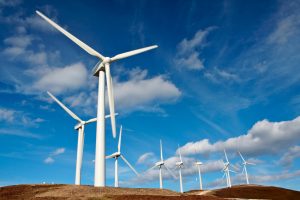 Wind turbines, the ideal alternative to burning fossil fuels: plentiful, renewable, clean energy. Or is it?
Wind turbines, the ideal alternative to burning fossil fuels: plentiful, renewable, clean energy. Or is it?
A recent study is forcing us to take a closer look at this green energy alternative, according to ScienceDaily. Extracting energy from large-scale wind farms has the potential to warm the Continental United States by 0.24 degrees Celsius, due to the wind turbine’s redistribution of heat in the atmosphere.
At the end of the day really, all large-scale energy systems have environmental impacts. But, the ability to compare the impacts of renewable energy sources is an important step in planning a future. Extracting energy from the wind causes climatic impacts that are small compared to current projections of 21st century warming, but large compared to the effect of reducing U.S. electricity emissions to zero with solar.
Still, “wind beats coal by any environmental measure,” says senior author David Keith, an engineering and public policy professor at Harvard University, “but that doesn’t mean that its impacts are negligible.”
First author Lee Miller says the effects of redistributing heat and moisture in the atmosphere via wind turbine impacts the climate, as seen in Keith and Miller’s study, which revealed it would take about a century to offset.
“The direct climate impacts of wind power are instant, while the benefits accumulate slowly,” says Keith. “Our hope is that our study, combined with the recent direct observations, marks a turning point where wind power’s climatic impacts begin to receive serious consideration in strategic decisions about decarbonizing the energy system.”
Other researchers also agree with Miller and Keith and are looking for new ways to tweak wind turbine technology in order to yield higher efficiency levels. Check out what other researchers are doing to create the next generation of wind turbines for more efficient and consistent energy production here.


